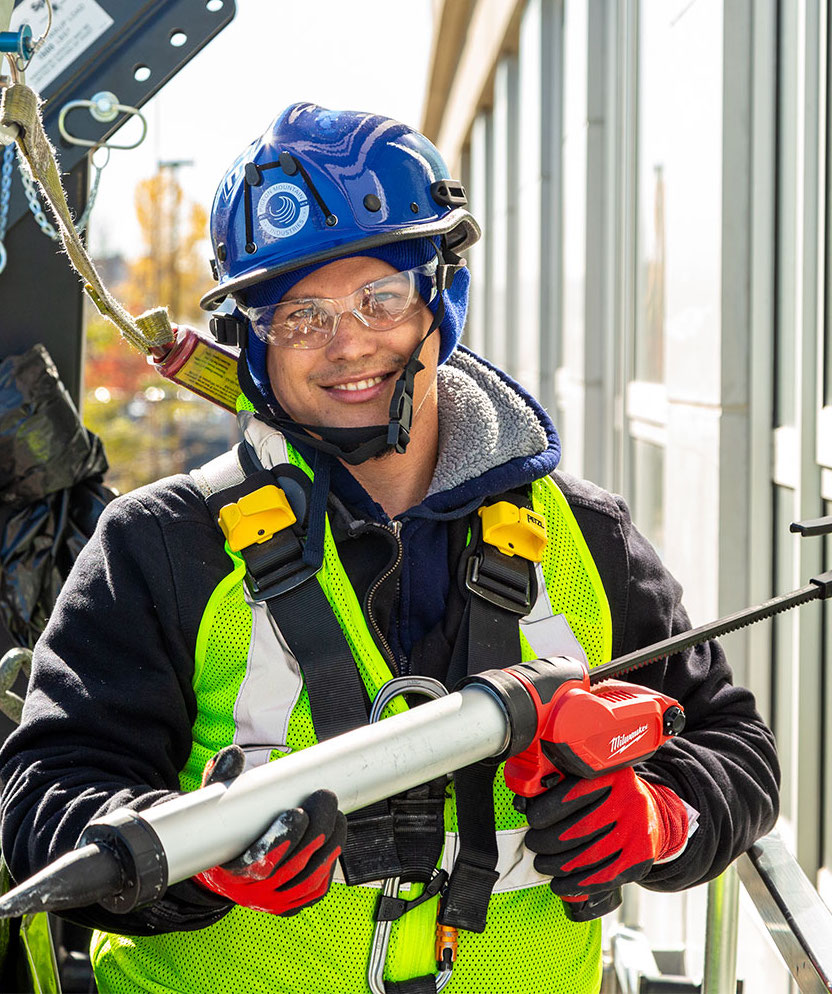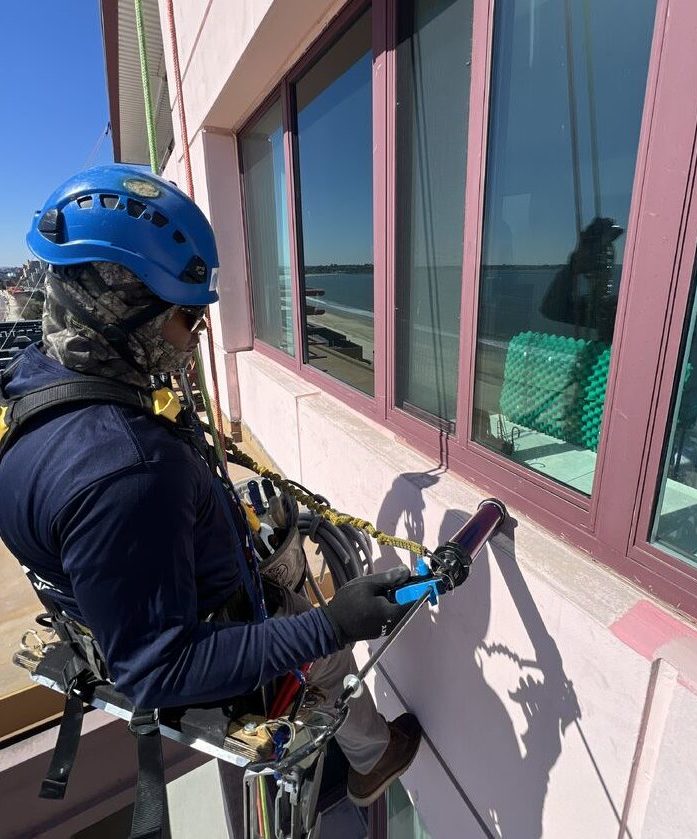Building Envelope Waterproofing
Waterproof your masonry, concrete, or glass building envelope.
Stop Reacting, With Proactive Maintenance
Prevent Unforeseen, Costly Water Damage
Have Peace-of-Mind Your Property Is Safe From the Elements
Prepare Your Building to Weather The Storm
Did you know you should replace your caulking and sealing approximately every ten years to prevent leaks leading to water damage and deterioration? Protect your building by proactively sealing your windows, joints, flashing, and outdoor structures.
Unsure if it’s time to replace your caulking and sealing? Give us a call. We will send an expert to inspect your building and give you an honest assessment.

We Partner with Hundreds of Businesses in the greater Memphis and Mississippi Area
Medical Facilities & Hospitals
Office Buildings and High-Rises
Banks/Financial Institutions
Auto Dealerships
School and Day Care Facilities
Warehouses
Churches
Retail Storefronts and Shopping Malls
Multi-Family Residential Buildings
Hotels
Restaurants
Government Facilities
Keep Your Building Moisture-Free
STEP 1
Get a Free Estimate
Our team will assess your property, hear your pain points, and provide a timely, honest quote. The price you are quoted is the price you will pay.
STEP 2
Get the Clean-Up Done On Your Schedule
We know your to-do list is ever-growing. Protect your time by letting us cross some projects off.
Our crews are scalable and ready to have your property in tip-top shape on a timeline you’ll love.
STEP 3
Enjoy the Sunshine
Rest assured, we’ll care for your property as if it were ours. How will you spend the time you’ve saved?

Partnering With Businesses Since 1977
OUR PROMISE TO YOU
Our Experts Have Your Back
Let’s be honest – some cleaners and maintenance providers leave you feeling unsure about the quality of their work. For 45+ years, we’ve made it our goal to do the opposite. Our “Golden Rule” is that people deserve high-quality, honorable service. That’s why we send hired employees, not contractors who treat your property as if it was their own.
A Timeline, Budget, and Team You Can Trust
Our customer-first philosophy means we respect your schedule and your property. All of our employees are vetted and required to pass a background check. We don’t smoke, we remain quiet to avoid disrupting your day, and we clean up after ourselves (We know – we shouldn’t have to point this out, but we’ve heard too many horror stories).
We Help You Avoid Problems On the Horizon
Maintaining your building well now improves the short-term value of your property AND prevents future, more costly damage. We provide feedback and expert guidance on the hard-to-reach areas of your property while we’re cleaning.
100% Satisfaction Guarantee
At Heavenly Sunshine, our motto is “Excellence is Everything” – we hold ourselves to extremely high standards. We aren’t finished until the project is done right. After all, we clean corners…we don’t cut them!
We Prioritize Safety
Our technicians are OSHA certified, including fall protection and ladder safety, to protect our team and you.
Frequently Asked Questions
If all of the exterior joint sealants (caulking) are replaced, should the façade experience any more leaks?
Possibly not, but that depends on the existing conditions of the façade materials and associated surface and back-up wall flashings. Therefore, it is impossible to achieve a “leak-proof” façade by only addressing the joint sealants.
If a clear “sealer” is applied to the exterior façade, will that provide waterproof protection?
No. The term “sealer” can be misleading. The typical clear products applied to façades are generally Silane or siloxane water repellents. There are other types of water repellents as well, but the important thing to remember is that these materials are designed to slow down water absorption into the façade materials, but the do not “waterproof” the façade. Similar to a water resistant vs. waterproof watch.
In order to waterproof a façade, should every crack and/or hole be repaired and sealed, all joint sealants be replaced, and a waterproof elastomeric coating be applied to all exterior components?
Possibly yes. That depends on the façade design and functionality. Most modern facades are designed to allow some level of water to enter through the exterior skin but to be managed by a weather resistive barrier (WRB) within the wall cavity directly behind the skin. These types of facades are generally described drainage systems, and some have complete air barrier systems installed through the WRB. Completely sealing these types of facades at the surface may create more problems and may not allow the system to function properly. Other wall systems are described as barriers. These systems do not have the WRB secondary lines of defense and water must be completely managed at the skin. One important note for waterproof materials, whether on the face (for a barrier) or the WRB (for a drainage system), these materials must be breathable so as to not trap water vapor trying to exit to the exterior side.
If a leak is being reported, should leak investigation and water testing be performed?
Typically, yes. Unless there are obvious holes and/or large cracks in a barrier system, in order to properly understand the existing conditions and locate the potential source(s) of water intrusion, proper diagnosis is achieved by trained professionals through investigation and specifically localized water testing. Note: spraying water on the façade in a general area and observing water on the interior side after a period of time is NOT water testing. Water testing is a specific process to first determine the assumed construction and water management design at the face and (even more importantly) behind the face and then work in a systematic process to isolate the various components to determine the assumed water paths. The process is very much like a murder investigation – it isn’t usually the first suspect.
How can a building owner / manager know if a building envelope / façade is a barrier or a drainage system?
Although there are some typical signs that a façade is a drainage system, such as the presence of weep holes or weep tubes at consistent locations throughout the façade, without proper review and investigation by trained professionals, scope development is often left to chance by many so-called waterproofing companies. These types of decisions could end up costing the owner hundreds of thousands of dollars or more without solving the root problems and lead to continued water intrusion.